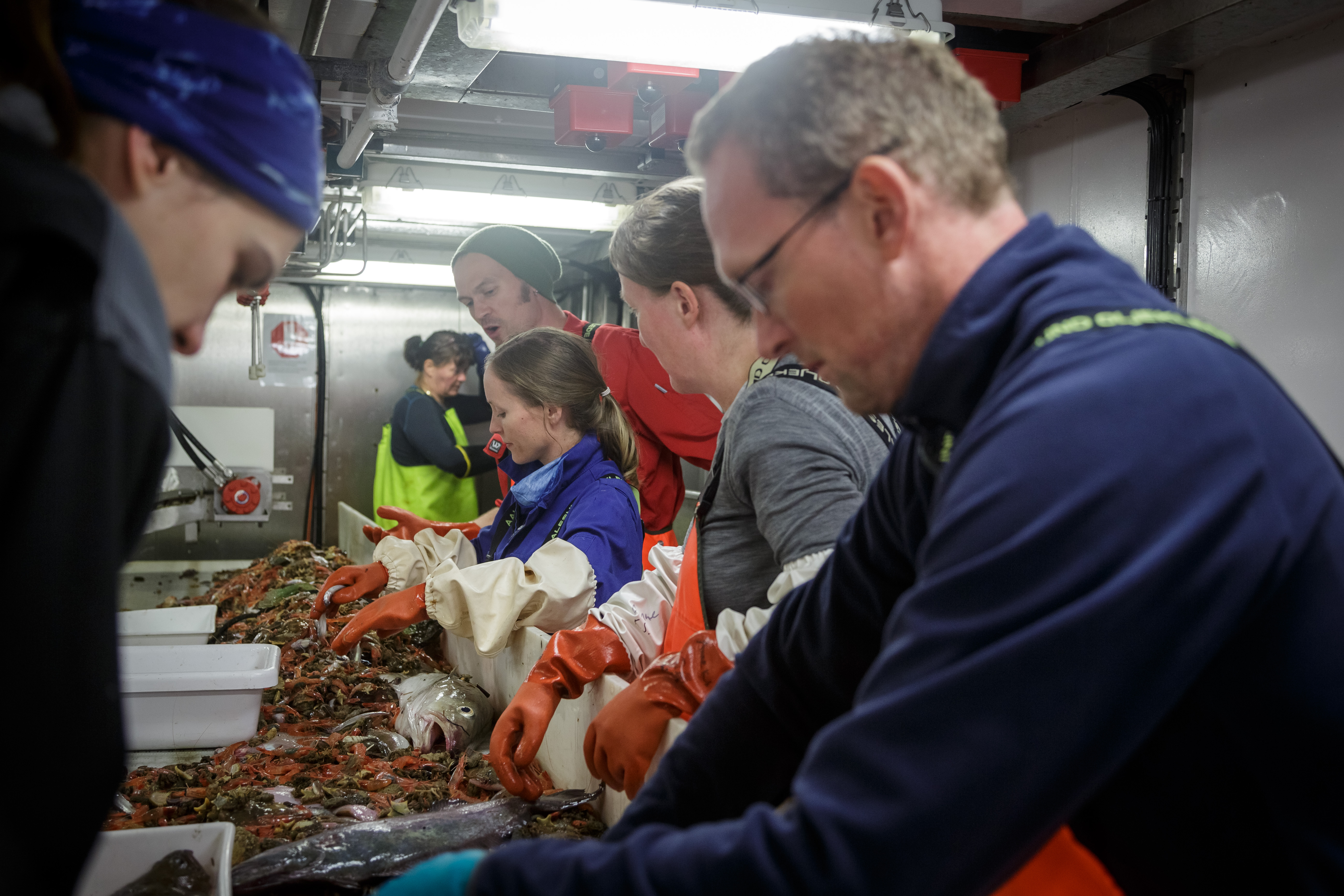Scientists have discovered a new deep sea octopus

Muusoctopus aegir was previously uknown to science.
Photo: Svanhildur Egilsdóttir (HAFRO)Published: 19.02.2024 Updated: 01.03.2024
"Discovering and scientifically identifying species is incredibly important - otherwise, we might lose them before we even knew they were here," says marine researcher and co-author Lis Lindal Jørgen.
There is still much to be discovered far below the ocean surface. Recently, researchers have identified a new piece of the puzzle.
They have formally described a new octopus, previously unknown to science:
Muusoctopus aegir.
The deep-sea octopod lives along the continental Scandinavian slope to Svalbard and eastward to the Kara Sea – as far down as 2500 meters below the ocean surface.
Incredible joy
Every year, the Institute of Marine Research conducts ecosystem surveys in the Barents Sea.
While the waves crash against the bow, marine researchers work diligently along the "assembly line" below deck, sorting the different species collected with each trawl haul.

Herring after herring and mackerel after mackerel, but then... a slightly unfamiliar octopus. Several times over the years, Muusoctopus aegir has appeared as part of the catch.
Jørgensen has participated in countless surveys, but encountering new species is no everyday occurrence, and she never gets used to it:
"It's an incredible joy. I get stars in my eyes and my knees go weak," she says.
25 individuals examined in detail
Researchers suspected they were dealing with a new species as early as 2012, but it takes time to collect enough individuals, enough data, and enough details to be certain.
Cephalopod expert Alexey Golikov from the German GEOMAR in Kiel has painstakingly examined 25 individuals collected from various surveys over several years, comparing even the smallest detail with other known species.
"The length and width of the body parts, as well as the number of suckers on the arms, differ from other known octopuses. The overall picture shows that Muusoctopus aegir is its own species," explains Jørgensen.
Muusoctopus aegir
Muusoctopus aegir is a relatively small octopus, up to 23.5 centimeters in length, with eight arms. It is violet-brown in color, with lighter areas on the belly and a white area around the mouth.
The name of the newly described octopus stems from Norse mythology. Aegir comes from Ægir, the mythological jötunn who ruled the seas.
The name also reflects that the octopus belongs to the genus Muusoctopus. This is the case for four of the 12 octopus species currently known in Arctic areas.
It belongs to the family of inkless octopuses (Enteroctopodidae).

Shrouded in mystery
There is still much we don't know about Muusoctopus aegir and its life far, far below the surface.
"There is a mystique surrounding these deep-sea octopuses because there are so many unanswered questions. We know far too little about them, and therefore, every piece of knowledge we manage to gather is very valuable," says Jørgensen and adds:
"It's not without reason that the saying goes: we know more about the surface of the moon than the deep sea. Exploring the depths of the ocean is expensive, and requires both time and resources”.
Reference:
Golikov, A.V., Gudmundsson, G., Blicher, M.E. Jørgensen, Lis L. et al. A review of the genus Muusoctopus (Cephalopoda: Octopoda) from Arctic waters. Zoological Lett 9, 21 (2023). https://doi.org/10.1186/s40851-023-00220-x
